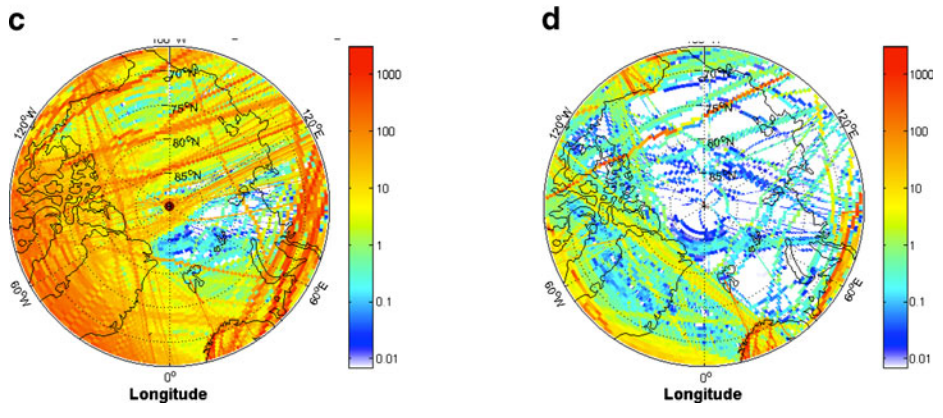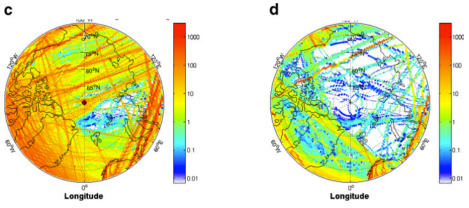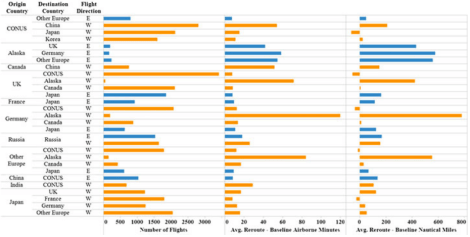Right after Sept. 11, the lack of any airplane activity over the U.S. allowed scientists to study the effects of flights on the weather. In doing so, they found a direct correlation: Temperatures dropped when planes weren’t overhead. The science of the research is far more complicated than that simple statement, but it showed clearly that air traffic influences weather.
There’s another way in which planes likely affect the planet: by contributing to Arctic ice melt. From The Washington Post:
A new study [PDF] suggests one way that humans could slow the melting of the sea ice — by preventing international flights from crossing over the Arctic circle. These cross-polar flights are a surprisingly large source of black carbon pollution in the region. And if those planes diverted course, that could help fend off the day when the Arctic sea-ice collapses for good. …
[T]hese cross-polar flights are just a small source of the greenhouse-gas emissions that are warming the planet. But they are a significant source of pollutants like black carbon, which absorb sunlight and warm the region. And pollutants from cross-polar flights tend to linger in the Arctic for a particularly long time, in part because the planes fly through the stratosphere, a relatively stable layer of the atmosphere. (Indeed, such pollutants could explain why Arctic ice is vanishing so much faster than scientists even expected.)
According to the models used by researchers from Stanford and MIT, rerouting planes to avoid the Arctic Circle could cool the region by .015 degrees C and even increase sea ice.
The natural first question is how such changes in flight patterns would affect emissions elsewhere. After all, there’s a reason that planes fly over the Arctic: It’s faster. It’s faster because it’s a shorter route, and a shorter route means less fuel consumption.
The researchers spent a lot of time considering this; in fact, it consumes much of the paper. In summary:
Rerouting flights increased fuel use and total pollution emissions by 0.056 %, but most such emissions were removed faster by wet deposition because they were now over latitudes of greater precipitation and lesser stability. … The worldwide fuel plus operational cost of rerouting is estimated at ~ U.S. $99 million/yr, 47–55 times less than one estimate of the 2025 cost benefit to the U.S. alone resulting from reducing Arctic and global temperatures due to rerouting.
Airlines aren’t likely to reroute flights unless they’re pushed by new laws and regulations. They won’t assume a $99 million annual burden willingly. And rerouting could add as much as two hours to some flights, an inconvenience that Delta isn’t going to impose on customers unless it’s forced to.
And there’s one other question: To what extent would this rerouting simply be tossing a few handfuls of sand on a long, slippery slope? How much time does a slight increase in summer ice buy us from the Arctic ice death spiral? However much, we’ll take it. We need every additional month — or week, or day — we can get.





